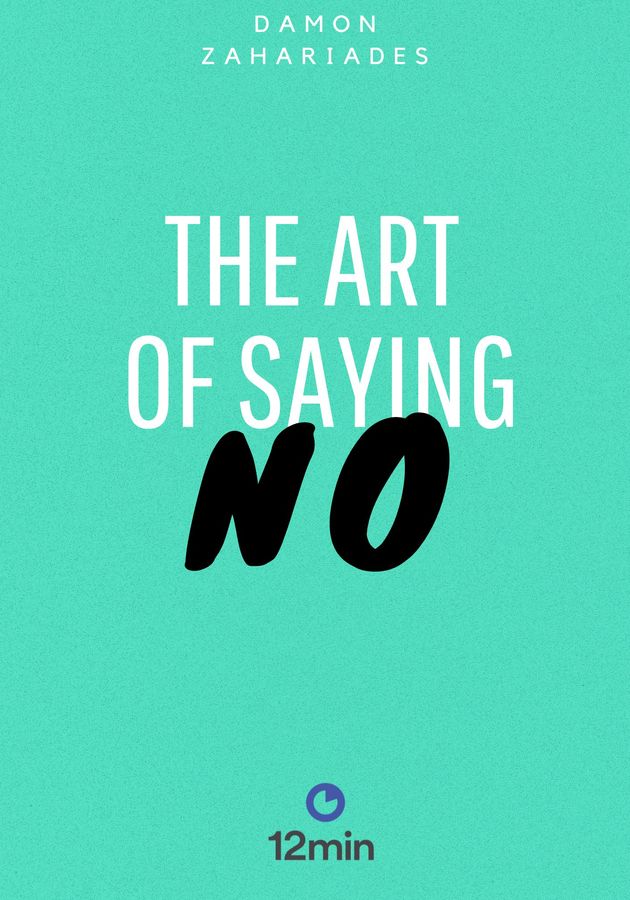From reading the title, you might end up with a false perception of what this book is all about. It’s not about dating, nor does it give any dating tips. It celebrates the cross-cultural desire for social interaction and how that reflects in our daily lives.
When was the last time you threw a party or held a meeting in which everybody involved gave their input? If you are rarely the instigator of these rallies, don’t worry, because Priya Parker will teach you how and why to do it. The central element of human nature was and always will be cooperation.
In “The Art of Gathering,” you’ll come across proven theories that showcase why having the skills to work and talk with people is critical for success. You can not help but notice that all societies throughout history also relied on human interactions to build their communities and still do so. For some, this is self-explanatory. But others may want more data to back up this claim.
Why do we gather?
Do many people wonder about the fuss behind gatherings, birthdays, and proms? Parker believes that plenty of different reasons are noteworthy, such as solving problems we can’t solve by ourselves, but that’s just one piece of the puzzle. On other occasions, having some good company can cheer us up after a long and exhausting week. After all, we prefer being surrounded by our loved ones, who are willing to spend their time with us.
The world has been associated with lots of terms lately, but the most accurate one is “a battleground of ideas.” From the outset of civilization, the combination of different cultures became a wide-known phenomenon. This early form of integration brought up different views of the world, often coupled with a social purpose.
To solve big issues affecting a larger group of people, rulers and ruled had to rely on gatherings – there was no way around it.
These days, we are bombarded with false narratives that indicate that the category of the event will dictate their planning and purpose. Some say that it is done by default, but evidence suggests otherwise. Regardless, this problem is beyond the goal of this book, so you shouldn’t worry about it.
Before you decide to do anything in life, you need to have a plan. Furthermore, you should have some intent that could increase your chances of success.
Sometimes, paths created by others can facilitate your ascension, but can also put you in a cage and inhibit your creativity. It all depends on your method to solve real problems since some traits can help you in that effort, while others might act as hurdles.
Embrace an open-mindset before you decide to embark on this journey because if you neglect ideas without taking a good look, you won’t be able to solve anything. Gatherings have always been the conduit through which ideas have circled, no matter how vague or superficial they appeared to some.
In all honesty, many gatherings lack real pull and give the impression of a shallow show, but that’s no excuse not to make yours a captivating experience.
Go from dull to impressive
The big question is: how to transform the gathering into something that could flare up the atmosphere? First and foremost, you must identify a meaningful purpose that will inspire your audience.
From there on, you must work on narrowing the purpose and making it more specific. That move could prevent the fire of excitement from extinguishing and will keep it blazing.
The author even mentions an online platform named Meetup for creating offline gatherings. In today’s culture, you have to take the planning part very seriously and be quite specific from the outset regarding the purpose of the meeting.
Even though Meetup is full of examples of people promoting their meetings, it’s up to you to make your gathering more attractive. The next ingredient that predicts success is uniqueness. When originality and a clear purpose are combined, you get the perfect formula to captivate people’s minds and enthrall them.
Those who fail to determine or identify the purpose of the gathering will face an imminent backlash and defeat. If you are keen to hold on to the explained formula, some things need to be done. A good starting point is to instruct your friends or clients to transit from the “what” to the “why”.
With the basics covered, there are a few strategies that could facilitate this transition:
- Zoom out: this step merely explains a person’s reasons for organizing the whole event.
- Drill, baby, drill: the person must keep drilling until discovering a treasure trove of ideas believed to have a positive effect on other people.
Parker often encourages the leaders of these gatherings to look beyond their interests and find out what problems are they trying to address.
If you like to move out of the shadow of normality, it’s time to turn heads over to discernible issues and give your best shot to find a potential resolution. You can use a simple method to track your progress: if the potential solution is linked to the purpose of the gathering, you are good to go.
It’s not always easy to separate your purpose from the group’s, but it’s something you must execute. If there’s no clear incentive as to why people have gathered, then it’s up to you to backpedal a bit and find the missing link.
Time is a scarce resource
Never forget that you are spending people’s most precious resource – time. They would expect some value in return for giving you their trust! So, it’s best if you recheck the power of the message you intend to dispatch.
If somehow, you cannot highlight out the purpose of your gathering, then you should consider setting up a get-together meeting first and ask assistance from the concerned parties to define the purpose of the big reunion. If that’s not a feasible solution, then don’t waste people’s time to begin with.
Purpose is your bouncer
Whatever your thoughts are, they mustn’t deviate from the perspective that clearly-defining the purpose of your gathering is crucial. If we embrace a different mentality that marginalizes the effects of setting the right goal, then we ought to abandon convocations altogether.
An open mindset cultivating a right set of habits is also a great addition and adds up to a successfully conducted meeting session. Some believe that rule-based gatherings, naturally more rigid, have a higher chance of a successful closure.
The outcome varies on a case to case basis, and you cannot conclude without taking into account a myriad of cultural and social factors. When it comes to monocultures, organizing gatherings happen in a way to minimize external influences. , You’ll find a wide array of monocultural societies in history..
The etiquette approach pushed forward by the author dives into social interactions and is similar to the monocultural position. Some might argue that this approach only propels the intolerant doctrine toward external factors, but on the other hand, it strengthens the ties between different factions in society. So, it all comes down to weighing the positives and negatives of each method.
The set of rules that apply to a certain group of people can be changed and modified, but it all depends on the group’s openness. So far, we’ve covered why having a purpose is critical in arranging different sessions and talks. We also explained how different decisions affect distinct groups, and why exploring these patterns can be of use to you.
Apart from learning the true value of gatherings, you’ll also stumble upon actionable guides that go into detail on how to choose a venue and guests for your reunion. It’s not adequate to have guests whose views are totally out of keeping with the purpose of your meeting. When the day comes, you should be equipped with the right mindset to put all in motion.
The next step to get the message across
People who excel at negotiating know that the mental approach is essentially the bridge between success and failure. The good thing is, everything can be taught, and if you care about how to present yourself to friends and colleagues, then you must be willing to change. One of the key elements to a successful gathering is priming your guests, and getting them familiar with the program.
Think of it as a training or pregame warmup where you get ready for the game, but the pressure is not the same. As you become more experienced in human interactions, you’ll notice that laying the groundwork for the meeting essentially means preparing your guests.
Parker states that even before your event starts, it has already begun. The time-window stretching between the discovery and the formal beginning is perfect to prime the guests. Many hosts fail to prepare their guests because they spend time seeking advice from food experts rather than facilitators.
It might seem like a hard thing to do, but priming isn’t hard at all. A simple email can do the trick, and the whole idea is to ask people to do something, not to bring something. Before you decide to go ahead with this tip, have your eyes set on an end goal.
The problems arise when we decide to rummage through things rather than trying to read the people. An example of this is people pondering over the color of the invitation and spending little to no time on the intention of the meeting and on the guests’ expectATITIONS.
Correctly naming your gathering is critical as well, because it builds the right perception about the event. The name for the gathering shows the reason and is directly linked to the end goal. Perhaps you are hosting a brainstorming session for you to discuss new strategies with the team, or perhaps a farewell event – they are different and must be arranged differently..
There’s also another overlooked element critical to a successful gathering – ushering. For some, this may seem excessive, but no one is asking you to carry your guests on your back to the right table or room. It’s simply a way to ease the transition from crossing the threshold to being a proactive guest.
Some of the guests are sleepier, while others can go on for ages, but those don’t change the fact that every ceremony has limits. You can scratch your head all day long about how to close the gathering, but that’s not going to solve anything.
It’s hard to cater to everybody’s whim, but it’s not difficult to understand that people love to be respected. Therefore, closing the event in high fashion matters to the attendees and the host as well.
Accepting the impermanence of a gathering is part of the art.
In all honesty, openings and endings mirror one another and, to some extent, evaluate their effectiveness.
Key lessons from “The Art of Gathering”:
1. Get the word out.
2. Keep it real.
3. Look inwardly and make a connection.
Get the word out
To organize these gatherings, you have to nurture strong relationships with purpose-driven communities which share similar values. Moreover, it would be far easier to attract an audience that resonates with the message promoted by the speakers. Otherwise, you would have to be acutely aware when defying the purpose of the gathering.
Keep it real
People love to rely on ethics in all further correspondence with other like-minded individuals. So, to build that genuine bond, examine all aspects that in some way linked to the session you wish to push forward.
Remember that every event begins not when the venue is sold-out, but when they first hear about it. Keep that human connection flowing – a recipe for success.
Look inwardly and make a connection
Unsurprisingly, it all depends on how we make the most out of everything. It surely helps if you establish a positive connection with the people present and generate some value as a result of pure intentions.
It doesn’t matter whether the gathering promotes or creates room for meaning-making, because the guests will eventually try to do that on their own. The gatherer should eventually usher them to some collective goal-undertaking procedure.
“The Art of Gathering” Quotes
Your opening needs to be a kind of pleasant shock therapy. It should grab people, and in grabbing them, it should both awe the guests and honor them. It must plant in them the paradoxical feeling of being totally welcomed and deeply grateful to be there.
Gatherings that are willing to be alienating have a better chance to dazzle. In a group, if everybody thinks about the other person’s needs, everyone’s needs are fulfilled in the end. But if you only think about yourself, you are breaking that contract. Remember that it’s hard to build a movement if you don’t know who’s in it.
Looking back is just one aspect of turning inward, though. Another is connecting the tribe one last time. To have an affirming moment of recalling not what we did here but who we were here





























